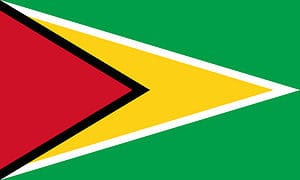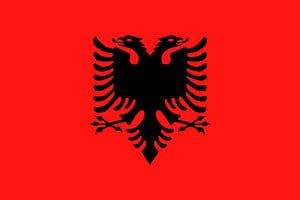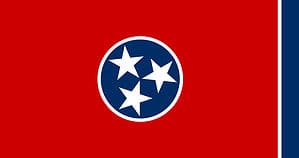When we think about flags it is quite easy to assume that they are just a brightly colored symbol for a country, state, or group. However, while on the surface that is true, flags actually have much deeper meanings. In many cases they represent the history of the place they symbolize, or even its hopes for the future. With its unusual design and numerous colors, the flag of South Africa actually manages to combine both history and hope. But how does it do this? Let’s find out!
A Brief History of South Africa
The southernmost country in Africa is the Republic of South Africa and is bordered by Botswana, Eswatini, Mozambique, Namibia, and Zimbabwe. South Africa is the site of some of the oldest human fossils in the world, particularly in the Gauteng Province. Findings suggest that early humans inhabited the country from approximately three million years ago.
When it comes to South Africa’s more recent history, both Britain and the Netherlands have had a long association with the country. Many Dutch colonies were formed in the area throughout the 1600 and 1700’s. However, Britain seized Cape Town in 1795 to prevent it from falling into French hands during the French Revolution. Britain eventually relinquished it back to the Netherlands in 1803, but it again fell under British rule in 1805. The following year many Dutch-speaking inhabitants of the British Cape Colony trekked northwards to escape the British colonial rule.
The South African Republic was formed in 1852 as an independent Boer Republic – a republic formed by the former Dutch-speaking inhabitants of the Cape Colony and their descendants, the other being the Orange Free State. However, unrest between the British and the Boer Republics led to the Boer Wars. After successfully defeating the British in the first war, defeat in the Second Boer War led to the South African Republic being annexed to the British Empire in 1902.
The Union of South Africa was formed in 1910 as Britain attempted to unify the different regions, but harsh laws and general dissatisfaction with the British rule contributed to continued unrest. Eventually, South Africa left the British Commonwealth and became a Republic in 1961.
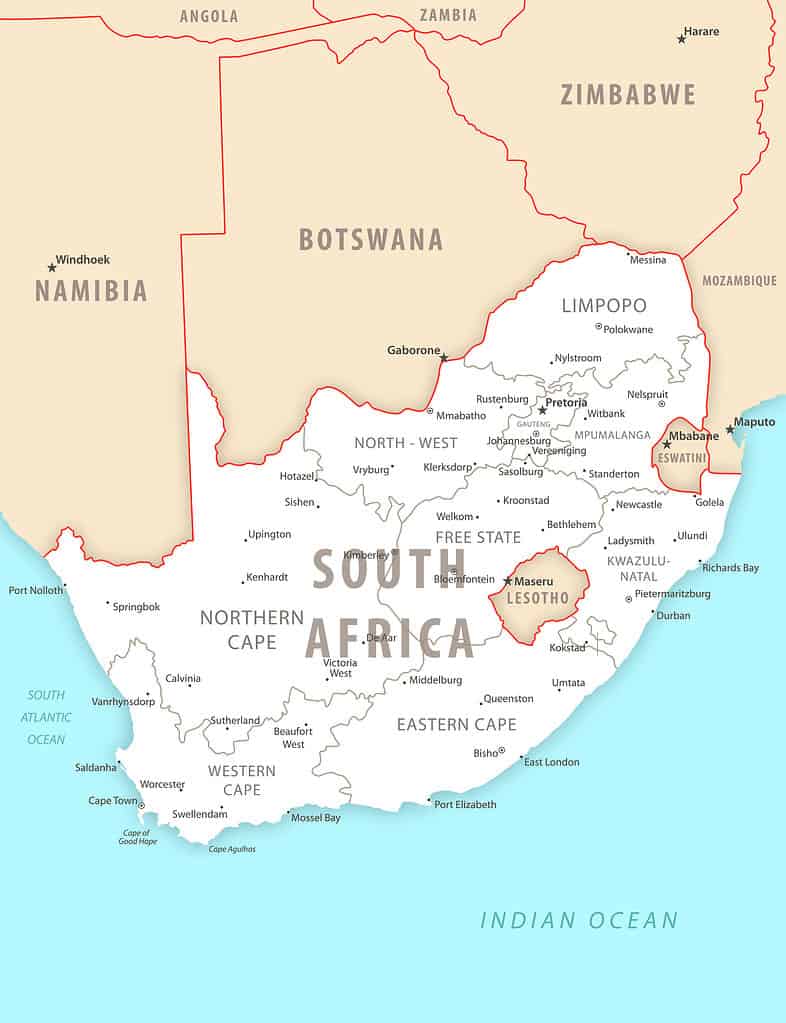
The southernmost country in Africa, South Africa is bordered by
Botswana
,
Eswatini
,
Mozambique
,
Namibia
, and
Zimbabwe
.
©iStock.com/Nataliia Nikolenko
History of the Flag of South Africa
The flag of South Africa has one of the more unusual flag designs as it consists of horizontal bands of red and blue which are divided by a green band in the form of a horizontal “Y” shape. The green band is separated from the red and blue by a narrow white outline. On the hoist side, within the arms of the “Y”, is a black isosceles triangle which is outlined with a narrow gold band. The flag was adopted on April 27, 1994 and is commonly called the Rainbow Flag or Seskleur (Afrikaans for “six color”).
The current flag was adopted on the day of the 1994 election and was designed only one week earlier. It was initially intended to be an interim flag only but in September 1995 it was decided that it would remain as the national flag due to the support that it had garnered while it had been in use.
South Africa’s current flag was adopted due to the increasing calls for change as the previous flag had become associated with the apartheid regime. Furthermore, many Afrikaners did not agree with the flag still carrying the image of the British Union Flag on it.
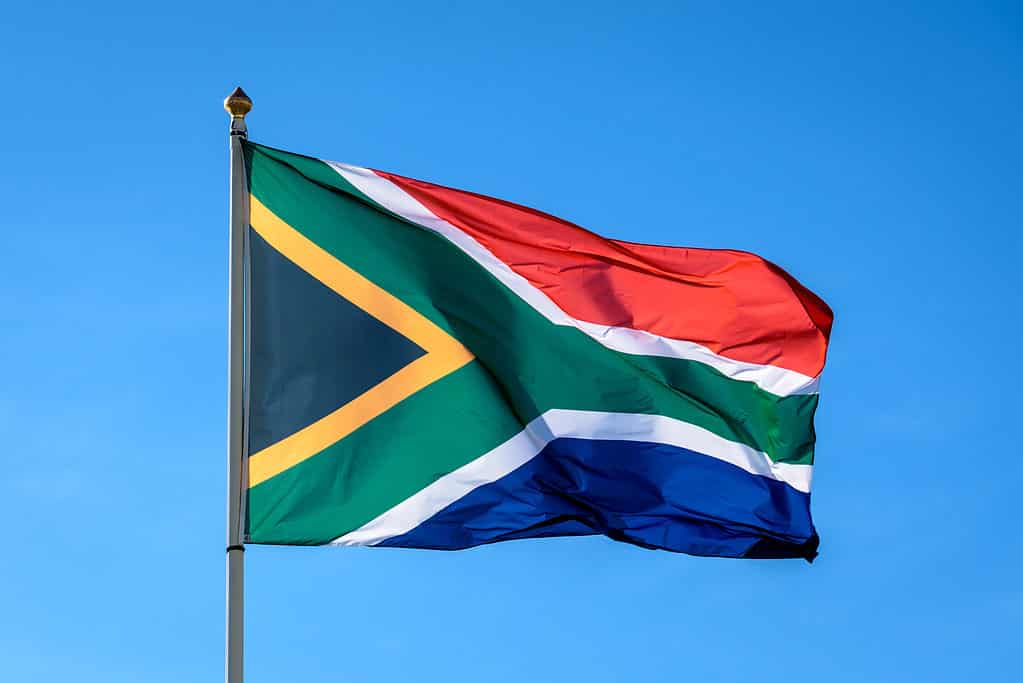
The flag of South Africa consists of horizontal bands of red and blue which are divided by a green band in the form of a horizontal “Y” shape.
©iStock.com/olrat
Symbolism and Meaning
The current South African flag is interesting and though it is quite easy to attach symbolism to the various colors used on it, the South African government officially states that “no universal symbolism should be attached to any of the colors”. Although South Africa prefers to avoid attaching any symbolism to the colors, the general consensus is that green, gold, and black represents the African National Congress as these colors are found on their flag. Also, red, white, and blue are colors that found on the flag of the Netherlands.
However, a part of the flag that we can attach symbolism to is the “Y” shape on it. As we mentioned earlier, the flag of South Africa manages to represent both the country’s past and its future. The “Y” shape represents the country’s history and other diverse elements merging together on one road ahead for the future. Therefore, it also represents both unity and hope too.
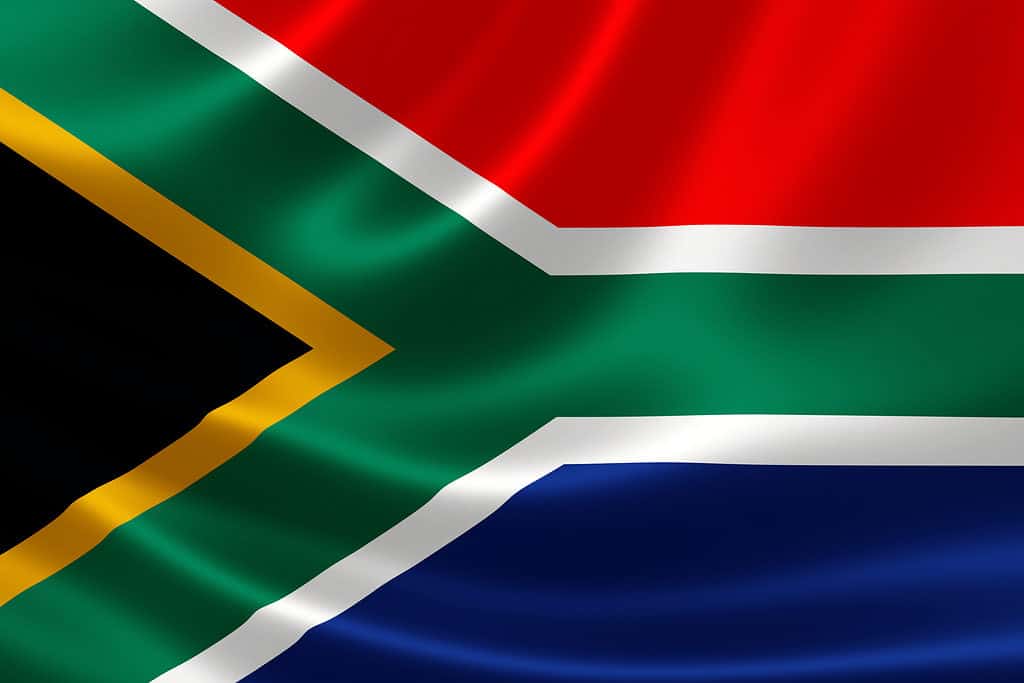
The “Y” shape on the flag of South Africa represents the country’s history as well as symbolizing unity and hope.
©iStock.com/ronniechua
Former Flags of South Africa
Several flags have flown over South Africa in the last two centuries. From 1852 to 1902 the land that now makes up the provinces of Gauteng, Limpopo, Mpumalanga, and North West in modern-day South Africa were part of the South African Republic. The South African Republic had two flags – the Vierkleur and the Burgers Flag. The Vierkleur was in use between 1857 to 1974, 1875 to 1877, and 1881 to 1902. It was comprised from the Netherlands flag with a dark green vertical band down the hoist side. The Burgers Flag was flown between 1874 and 1875 and was blue with a red saltire outlined in white.
Following the Boer War, the area that is now South Africa came under the British Union flag in 1902 with the various colonies also having a colonial flag of their own. In 1910 the Orange Free State, Zuid-Afrikaanse Republiek, and the colonies of Cape and Natal joined together as the Union of South Africa – meaning that the colonial flags were no longer needed.
Although technically the British flag was still the national flag the South African Red Ensign came into use across the area. The British Red and Blue Ensign flags were already used on vessels at sea, but a Red Ensign with the South African coat of arms on it was authorized for use on South African vessels. However, the South African Red Ensign became the de facto national flag until 1928.
Flag of South Africa (1928 – 1924)
The flag that was replaced by the current flag design was a flag that went by the name of Oranje, Blanje, Blou (Afrikaans for “orange, white, blue”). It was an orange, white, and blue tricolor (hence the name), and featured small versions of the British flag, flag of the Orange Free State, and the flag of the South African Republic (Vierkleur) in the center. It is the only flag in the world to have five flags within the three smaller flags. This is because both the South African Republic and Orange Free State flags have the flag of the Netherlands on them, while the British flag is created from the flags of England and Scotland as well as the St Patrick’s saltire flag.
The tricolor flag was adopted as the national flag as many people did not truly like using the Red Ensign flag – particularly because of its association with Britain. However, the new flag still retained the smaller Union flag on it. In 1948 and attempt was made to amend the design and remove the British flag from it, albeit unsuccessfully. The Oranje, Blanje, Blou continued to be used and the design remained unchanged, even when South Africa left the Commonwealth and became a Republic in 1961.
The flag also became known as the Apartheid Flag due to it being the national flag during the apartheid era. The flag therefore became associated with atrocity and became a highly controversial symbol, eventually being replaced by the current six color flag.
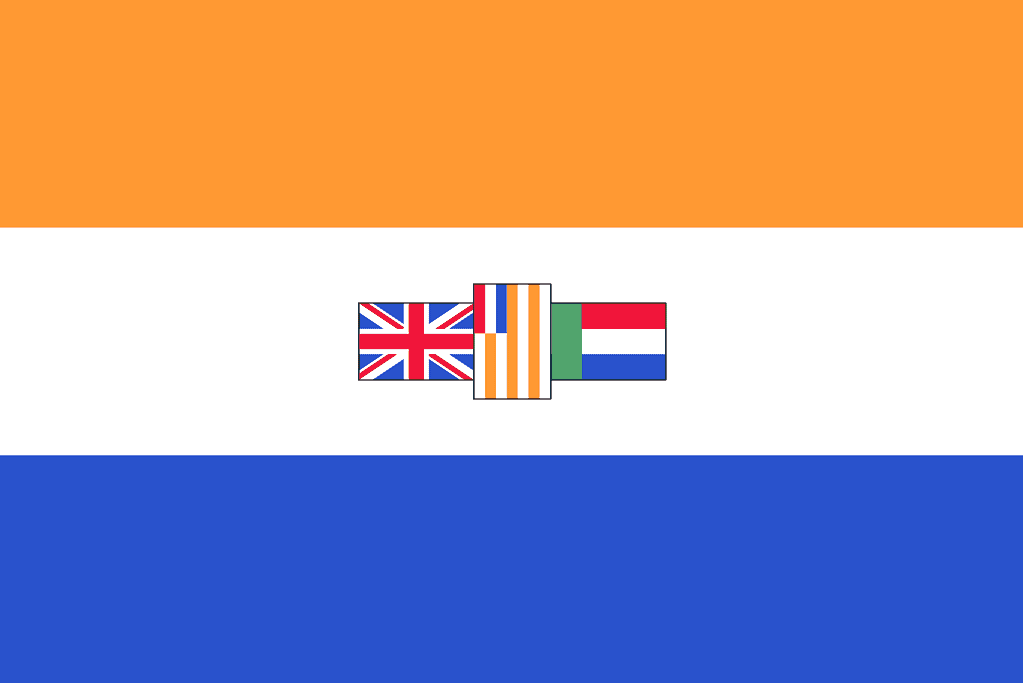
Before the current flag there was the
Oranje, Blanje, Blouwhich is the only flag in the world to have had five flags within the three smaller flags.
©Government of South Africa (Vector graphics image by Denelson83), Public domain, via Wikimedia Commons – License
Up Next
- See Different Flags With Triangles On Them
- Different Flags With Union Jack
- The Flag of the Netherlands: History, Meaning, and Symbolism
The photo featured at the top of this post is © iStock.com/cveiv
Thank you for reading! Have some feedback for us? Contact the AZ Animals editorial team.




